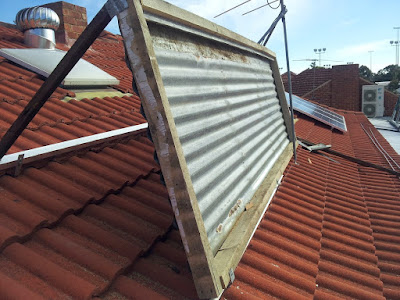Get More From Your Commercial Roofing Systems | Naples Roofing
Naples Roofing will install a new commercial roofing system in the USA that will keep your facility watertight for many years. When your building is coated with a white, highly reflecting single-ply membrane roof system, you may expect decreased summertime energy expenses.
An energy-efficient "cool" roofing system provides further advantages.
Benefits of Reflective Roofing
Reflective roofing can assist reduce peak utility power consumption by decreasing HVAC loads during the middle of the day, especially in metropolitan areas. The sun is at its hottest, air conditioners are working overtime, and electricity companies are frequently billing at higher rates owing to increased demand.
Perhaps most critically, increasing energy production may result in a rise in air pollution in the form of smog and greenhouse gases, aggravating human health issues. Reflecting solar radiation back into the atmosphere rather than collecting and converting it to heat, highly reflective "cool" commercial roofing solutions can help reduce these difficulties.
Green Roofing Systems
Commercial rooftops around the country are being outfitted with new environmentally friendly technologies and designs. Commercial building owners are increasingly seeing the rooftop as an asset that may bring benefits in addition to keeping their structure watertight. Rooftop solar (photovoltaic) systems are the most common, allowing building owners to produce their own electricity.
In some places of the United States where sunlight is plentiful, the lowering cost of solar panel installations has resulted in "grid parity." Grid parity happens when the solar system's efficiency is high enough that the cost of generating power on the rooftop is equivalent to the cost of purchasing it from the utility.
The popularity of vegetative roofs is also rising. Building owners may benefit from these systems in a variety of ways, including providing sound insulation, delaying stormwater runoff, lowering energy usage, and prolonging the life of the roof membrane by minimizing or eliminating UV radiation and weather exposure.
The upkeep necessary to keep plants fertilized, watered, and clipped in order to maintain a healthy environment is a disadvantage of vegetative roofs.
Installation of controlled flow roof drain systems, sometimes known as "blue" roofing systems, is a more recent rooftop trend, particularly in metropolitan areas. These devices collect rainwater on the roof and then regulate its discharge to avoid overburdening the building's and neighborhood's drainage systems. Water for vegetative roofs is supplied by several blue systems.
Single Ply Roofing
TPO, PVC, and EPDM are used in commercial roof systems. Many building owners choose them because they resist peeling, cracking, and other sorts of weathering. Their primary feature is that they are intended to be placed in a single layer. The thermoplastic and thermoset membranes are the two primary types of single-ply roofing membranes.
Thermoplastic Polyolefin (TPO)
TPO is a low-slope roofing material that contains strengthened roof sheets with heat-welded joints and excellent reflectivity. TPO is a single-ply membrane made of polypropylene and polymerized ethylene-propylene rubber. TPO is a kind of thermoplastic membrane that comes in a range of hues, with white, grey, and tan being the most prevalent. Mechanically connected, glued, or ballasted membranes can all be used to install the membrane.
Polyvinyl Chloride (PVC)
PVC roofing is made up of two layers of PVC sandwiched between two layers of polyester reinforcing scrim. The top ply contains UV-resistant compounds. The bottom layer is often darker and contains plasticizers to aid with installation. Longevity, fire resistance, and durability are some of the other advantages of a PVC membrane. PVC is also weldable, which means it may be welded to another sheet to create a waterproof seal. By welding a pre-manufactured rib to the surface of PVC sheets, a visually attractive aesthetic may be achieved at a significantly reduced cost. PVC membranes can also be recycled and utilized in new sheets.
Ethylene Propylene Diene Monomer (EPDM)
EPDM roofing is a type of rubber roofing that is used for a variety of applications. “Ethylene propylene diene monomer” is a difficult-to-pronounce chemical molecule noted for its flexibility and toughness. EPDM roofing is made of a material that can withstand the sun's harmful rays and the continual assault of UV radiation. EPDM rubber roofing is one of the most popular commercial roofing materials today because of its low cost and high resiliency. EPDM roofing membranes are made from natural gas and oil and are a form of synthetic rubber. EPDM is a low-slope commercial roofing material that is utilized all over the world.
Considerations for Sustainability
There are a few key considerations to keep in mind if you're contemplating any of these technologies.
To begin, all of these environment-friendly modifications to your rooftop will add weight to the roof, so it's a good idea to consult commercial roofers in USA to confirm that the commercial building structure can safely take the additional load.
Second, if your existing roofing system is more than a few years old, you should consider replacing it, since the roofing beneath any of these new environmental systems is crucial to their effectiveness.
If a problem arises with the roofing system after one of these systems has been installed, discovering and correcting the issue might be costly. The expense of installing a new membrane is inexpensive when compared to the cost of installing a vegetative, solar, or blue roofing system.
Naples Roofing has the required knowledge and experience to choose the appropriate roofing system for each of its projects and to give the required "overburden" guarantee. We are industrial and commercial roofing contractors in Buffalo providing roofing installation, repair, and replacement services. Contact us for roofing queries, information, and request an estimate!




Comments
Post a Comment